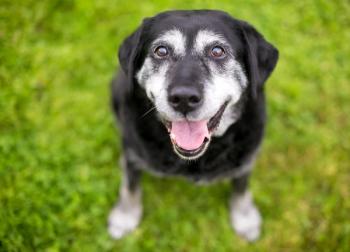
Common congenital and hereditary problems in neonatal small animals (Proceedings)
Neonatal pathology may involve a number of developmental malformations. A solid background in embryology and early development assists in understanding the pathogenesis of many of the conditions.
Objectives
• To familiarize practitioners with the common abnormal findings in neonates due to congenital and hereditary disease.
• To aid in the accurate recognition and diagnosis of congenital and hereditary conditions encountered in pediatric small animals.
• To increase knowledge of the current information regarding genetic testing of dogs and cats.
• To promote knowledgeable genetic counseling of dogs and cat breeders.
General Key Points
• Neonatal pathology may involve a number of developmental malformations. A solid background in embryology and early development assists in understanding the pathogenesis of many of the conditions.
• The causes of many well described defects remain undefined.
• The rate of occurrence of congenital defects in neonatal puppies and kittens has been reported between 7% and 20%.
Causes of Congenital Defects and Disease
• Genetics, Heredity- Veterinary research is rapidly adding to the understanding and diagnosis of defects known to be genetic. Many genetic diseases are outwardly visible, but mutations may also cause disease at the biochemical level making diagnosis more difficult. The defect may cause disease that is incompatible with life resulting in death within the first few days. These cases are often classified as" faders". Other mutations may cause symptoms that may not become clinical for months or years, thus delaying their diagnosis. Metabolic screening is recommended for neonates displaying symptoms compatible with an inborn error of metabolism. Testing may be performed at the University of Pennsylvania's Metabolic Screening Laboratory. Detailed information on testing and sample submission may be found at
• Toxins, Teratogens, Chemical agents- The developing fetus is most susceptible to teratogen insult during the first third of pregnancy, the period of organogenesis. Potential teratogens include a variety of environmental pollutants, plants, vitamins, minerals, hormones and drugs. Commonly implicated drugs usually fall into the categories of antibiotics, anticonvulsants, antineoplastics or anti-inflammatories.
• Infections- A variety of infectious organisms may induce congenital abnormalities. Infection with feline panleukopenia virus or vaccination with a modified live vaccine can induce cerebellar hypoplasia in kittens.
• Developmental anomalies may also be caused by other factors including ionizing radiation, temperature extremes, hypoxia, maternal metabolic disease and trauma.
• Anomalies affecting the central nervous, cardiovascular or respiratory systems may be incompatible with life resulting in resorption, stillbirth or death shortly after birth.
Congenital Defects commonly identified in Puppies and Kittens
Breed Related Diseases
Certain breeds (such as the bulldog) have a plethora of defects that commonly occur within the breed. Knowledge particular breeds predispositions will greatly increase the ability to recognize all problems presented to the practitioner. The goal is diagnosing all obvious and subtle abnormalities on physical examination. Often the recognition of the mild outward clinical signs of a problem, along with cognizance of the breed related predispositions, aids in making diagnosis of less obvious problems such as megaesophagus, heart defects, hypoplastic trachea, metabolic defects or immunodeficiency.
Differentiating Genetic Defects from other Congenital Anomalies
• A problem is more likely to be a hereditary defect if it is known to be genetically transmitted in another breed or species. MEDLine and VIN are very useful tools for conducting searches of known genetic diseases.
• Genetic disease tends to occur in more than one litter produced by a dam or sire.
• The frequency of a genetic defect will increase with inbreeding.
Types of Genetic Tests
• Phenotypic testing – Examples of phenotypic tests would include CERF exams, OFA or PennHIP radiography, clotting assays and echocardiography.
• Molecular Genetic tests are of two types. Direct DNA tests and linked-polymorphism tests. Both utilize polymerase chain reaction (PCR) technology to quickly analyze the genetic code.
• DNA Linkage tests- DNA based test in which the actual genetic mutation is not detected, but an identifiable marker area of DNA located nearby on the chromosome is used as an indicator of the defective gene. The defective gene is said to be "linked" to the marker.
• Direct DNA Tests –Mutation based testing, utilizes DNA analysis for the actual defective gene.
Genetic counseling
Small animal practitioners in genetic counseling of their clients most commonly employ two extreme approaches. The first is the recommendation not to repeat a breeding and instead to outcross. The second is to remove the affected animal, its parents and all littermates from a breeding program. Neither of these recommendations serves the best interests of the breed as a whole.
The first recommendation simply "dilutes" unwanted genes within a breeds "gene pool". Defective genes will remain present in the breed at the prior rate. The second recommendation can significantly affect the genetic diversity and health of the population, especially in a breed with a small gene pool. Quality genes may be lost by such strict elimination. Genes can never be gained within a breed population, especially one that is operating with closed studbooks. Genes can only be lost. The genetic diversity of the breed should be maintained if at all possible. "The goal of genetic counseling is to effectively manage the spread of defective genes, while preserving the health and diversity of the population." 2
Factors affecting counseling recommendations may include:
• Size of the breeding population
• Frequency of the defective gene within the population
• Rate of occurrence of the defect in the breed
• Availability and accuracy of tests for the defect
• Mode of inheritance if known
Autosomal recessive disorders
• Examples of Autosomal Recessive traits include von Willebrands disease in many breeds, cystinuria in the Newfoundland and Congenital Hypothyroidism with Goiter (CHG) in the Toy Fox Terrier.
• Test utilizing direct or linkage based DNA tests if available to enable identification of carrier status.
• Breed carriers to normal, thus producing no affected offspring, and test the progeny.
• Replace the carriers in breeding stock with normal offspring, thus preserving genetic diversity.
• If no test is available for carrier status, assess the risk by other methods.
• Open registries are essential to determination of risk status.
• Breed animals with high risk of being carriers to low risk individuals.
Autosomal dominant
• Examples of autosomal dominant traits include blood types and coat colors. HCM of Maine Coons and American Shorthairs is inherited in an autosomal dominant fashion.
• Dominant traits are the easiest to manage, at least one parent is affected, and thus defects with autosomal dominant inheritance are easily eliminated before an animal reaches breeding age.
• Avoid breeding any affected animals possessing traits that cause early death or suffering.
• Incomplete penetrance complicates the diagnosis and management of these traits. One example of an autosomal dominant disorder with incomplete penetrance is oculoskeletal dysplasia in the Labrador Retriever.
Sex-linked disorders
• X-linked myopathy and hemophilia are examples of sex-linked traits.
• These defects may be traced through pedigree analysis.
• Affected males received the gene from their dam. Affected females received the gene from both parents.
• Affected males bred with normal females produce only clear male and carrier female offspring.
Polygenic disorders
• Hipdysplasia, epilepsy and many heart defects are examples of polygenic disorders.
• Best approach is to consider them "threshold" traits. Assume a certain level of "liability" or "susceptibility" genes must be present for expression of the disease.
• Unaffected animals that produce affected offspring must both be considered carriers of some concentration of "liability" genes.
• The breadth of an animal's pedigree is just as important to consider as the depth of pedigree in assessing its potential risk of carrying "liability" genes.
• The importance of open registries to assess any littermates and ancestors known disease status should be emphasized.
Unknown inheritance
• Unfortunately most diseases currently reported as "genetic" fall into this category.
• Consider treating as polygenic traits in controlling and making genetic counseling recommendations.
Genetic registries
All small animal practitioners should familiarize themselves with the registries that are currently certifying results of phenotypic or DNA tests and registering breeding animals. These registries provide valuable information, not only for the breeders wishing to improve the health of their lines, but also for the veterinarian making counseling recommendations to them. Some of the most commonly used registries include the Orthopedic Foundation for Animals (OFA), Canine Health Information Center (CHIC) and the Canine Eye Registry Foundation (CERF). Independent companies and many leading university's veterinary laboratories provide genetic testing. A full listing here is impossible and the practitioner should refer to the texts referenced below or specific breed clubs health committees for testing recommendations.
Summary
• Many different processes can result in congenital defects.
• Veterinarians should familiarize themselves with the defects most prevalent in popular breeds.
• Determining whether a defect is hereditary is not always possible.
• The field of genetic testing and the number of genetic tests available is rapidly growing.
• Practitioners should endeavor to remain a primary source of knowledgeable genetic counseling for dog and cat breeders.
References
Hoskins JD, Congenital Defects of the Cat and Congenital Defects of the Dog, In Textbook of Veterinary Internal Medicine 5th Edition: ed. Ettinger SJ, Feldman EC. Philadelphia WB Saunders Co, 2000; 1975-1996.
Bell JS, Genetic Counseling, Pedigree Analysis, and the Prevention of Genetic Disease, in Proceedings of the Annual Conference, Society for Theriogenology, 2004: 352-361.
Root Kustritz MV, Examination of the Small Animal Pediatric Patient, in Proceedings of the Annual Conference, Society for Theriogenology, 2004: 292-299.
Ackerman L. The Genetic Connection. AAHA Press, 1999.
Casal ML. The Genetic Workup, in Proceedings Tufts Canine and Feline Breeding and Genetics Conference 2003.
Newsletter
From exam room tips to practice management insights, get trusted veterinary news delivered straight to your inbox—subscribe to dvm360.






